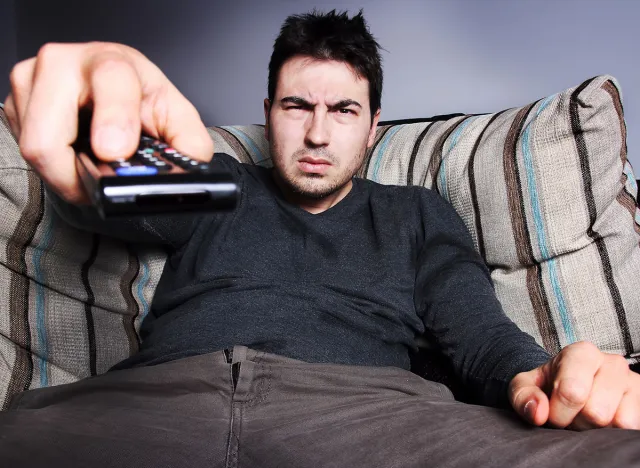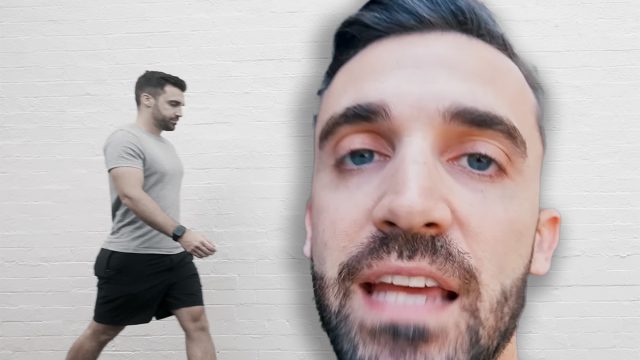I Walked 10,000 Steps a Day for 30 Days, and Here's What Happened
Do you want to walk more? Matt D'Avella is a documentary and YouTube filmmaker who makes videos about minimalism, happiness, productivity, eating food, and exercise. In one viral video, he details his experience of walking 10,000 steps per day. "So I lift weights regularly, and I consider myself an active person, but if there's one area I definitely ignore, it's cardio. I rarely hit the treadmill, I don't run, and my average steps per day for the past three years has been less than 4,000," he says. "I wanna finally add more movement into my daily routine, and so I'm gonna walk 10,000 steps a day for 30 days starting now." Here is what happened.
It's Not Easy to Find the Time
"One thing that was clear as I made my way through the first week is that it's not always easy to find the time," says Matt. "It is surprisingly difficult to get 10,000 steps into a day. I keep finding myself checking my tracker at 8:00 PM at night and realizing that I am 2000 or 3000 steps short. And so what I've had to do is go out after dark and just walk around my neighborhood, which isn't creepy at all. Something is definitely gonna have to change. I'm definitely gonna have to switch up my routine, figure out a way to get my steps in early because I definitely can't keep this up."
It's Important to Track Steps

"One of the things I've done to help me track my steps is to get a smartwatch," Matt says. He uses an Apple Watch, "and it uses a combination of GPS tracking and arm motion when estimating distance and steps."
His Life Was More "Sedentary" Than He Realized

One thing the experiment made him realize is that his life had been "quite sedentary," he says. "I'm not getting up and moving a whole lot when I start my work. I sit down for eight hours or 10 hours, and I rarely get up. I'll get up to go to the bathroom to make another cup of coffee, maybe to go to the gym. But my steps and my movement overall have actually been quite low." A goal he has set is to increase movement "in a sustainable way, in a way that I might be able to carry on after the 30 days," he says.
He Realized That Movement Adds Up
"The first thing that really started to work for me was focusing on incidental exercise, incidental exercises, any movement done in small amounts that adds up over the course of the day," he says. "We all have choices that we make each day that impact the amount of movement we get. Like taking the stairs instead of the elevator, walking the long way to the gym or using a smaller cup of water so you have to refill it more often. This kind of exercise requires less effort than carving out a dedicated hour to go to the gym and can be built off everyday activities and routines. So, I began making different choices every day, and I started to notice a difference. A few hundred steps here, a couple thousand steps there. So this alone isn't getting me across the finish line, but it's still nice to see some progress, perhaps."
He Started Multitasking on Walks

His "biggest breakthrough" was when he asked his friend to go for a walk during their work meeting. He also picked up a package on the way. "As obvious as it sounds, I never really thought about taking work meetings and calls while walking," he says, noting that it's an easy way to mix business and pleasure. He also takes work calls on his walk and goes for walks with his wife for long discussions.
He Slowed Down and Tried to Enjoy Every Walk

"One thing that I have started to do recently that has helped out immensely is to really slow down and try to actually enjoy each and every walk that I take," he says.
"Early on, I'd gotten into the habit of rushing through my steps. I find myself in that awkward place somewhere between walking and jogging, like I'm holding it in while rushing to the bathroom. But once I started to slow down, I could take in the joy of my walks. I started casually listening to history podcasts. I listened to walking meditations. I walked silently around my neighborhood, and I explored new hikes and trails around Sydney. And this has honestly become my favorite thing about this city. There are dozens of beautiful hikes from the bush to the beaches. There are stunning views and moments of complete immersion in nature that you don't even realize you're in the city."
And he soon noticed a difference. "And just as I started to find the joy in walking, I also started to notice some results. I've exercised more, I've climbed more flights, taken more steps, and had more walking and running distance."
He Also Noticed That Steps Add Up Fast with Household Chores

"I've just had one of the easiest days yet, blowing past 10,000 steps with little effort at all. I haven't gone on a single walk all day. And the reason I've been able to get so many steps is because I've just been doing household chores all day," he says. "When I have these days when I'm just naturally moving about, I'm doing chores, I'm picking up things around the house, I'm running out for groceries, going to the gym, then my steps start to add up, and it starts to feel a whole lot more effortless."
He Walks Instead of Drives
Another way he gets his steps in? He walks instead of drives. "I am really short on my steps, so I decided to walk to dinner tonight," he says.
He Feels "A Lot Better"

"I feel a lot better. I do. I feel a lot better now that I have gotten this extra cardio in, even if that cardio was as simple as walking more," he says. While he didn't lose weight because his eating habits weren't ideal, his overall health improved.
RELATED: I Lost Over 130 Pounds in 13 Months Through Strength Training
Here Are His Future Intentions with Walking

"Here are my intentions going forward: I don't intend to hit 10,000 steps every single day. I just don't think that's a realistic goal for me personally. But I intend to walk more, and I want to try to increase my daily average to 7,500 steps per day. Some days will be less than that. Some days will be more. And I plan to reach this goal by repeating some of the things that work best for me over the past 30 days," he says.
Walking Whenever Possible
"That's walking whenever possible, even when it's more convenient to drive. That's walking while taking calls, especially in the morning, and also trying to slow down and enjoy my walks as much as possible instead of rushing through them like I'm about to ship my pants." And if you enjoyed this article, don't miss 12-3-30 Walking Method: 20 Proven Tips to Lose Weight Faster.





